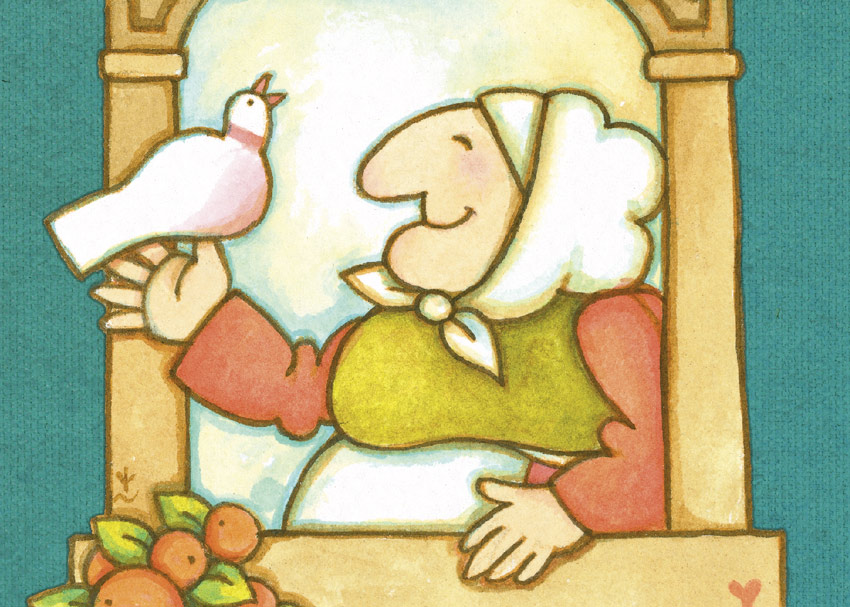Teachers, Here’s How to Set Your Classroom Library Up for Success
by Lindsay Barrett
So many book-loving educators think of the classroom library as the heart of the classroom. Rightly so! Access to an appealing and user-friendly collection of books goes a long way towards helping kids enjoy reading. Setting up a classroom library is an art that you can refine over time — and these tips can help.
(Of course, your classroom library will look different depending on the age you teach. Many of the suggestions are for PreK-2, but you can adapt them for any grade.)
Start slow and teach as you go.
Adding books slowly over time gives you the best opportunity to introduce titles, build excitement, and teach kids how to use the space. In Pre-K and kindergarten, I like to start the year with just a display shelf of tempting titles and a mixed bin of books ready to tote over to each table or small group. No pressure to put anything back in a particular spot, but plenty of options for browsing. I might add a few more straightforward collections for older grades, like a couple of popular series.
After a few weeks of school, I like to stage a dramatic lesson about, “I reallllllly wanted to read [favorite class title] this morning; I looked everywhere, but I COULDN’T FIND IT!” This inevitably leads kids to come up with the bright idea to add some organizational categories to our classroom library. There’s no one right list of bins or sections. Instead, it’ll be most effective if your categories mirror your teaching. For instance:
- If you like to do author or illustrator studies, make baskets of books by creators you’ve learned about.
- When you teach a writing unit, like personal narrative writing, create baskets of great mentor texts.
- If you’ve been busy helping kids learn to access a specific genre, like wordless books, alphabet books, or early graphic novels, position these categories front and center.
- When you learn about fiction vs. informational text, develop a straightforward system for designating which bins contain each text type, and talk about sorting the books by subject matter.
- Keep it interesting by creating mini-collections that change during the year. For instance, if you’re learning about identifying characters’ emotions, work with kids to set up a display with collections of “sad books” or “nail-biters.”
Create the space with kids.
Think of yourself as a marketing director—for reading, that is!—and your class as your marketing team. Cultivating an ongoing sense of pride and excitement around books in your library goes a long way toward developing a book-centric classroom culture. Anything that involves the kids in creating and maintaining your classroom library will increase their investment in the space. For instance:
- Have students help create labels for book bins. It can be helpful to make labels to mark both the bin and the spot on the shelf where it goes. If you like to swap out categories during the year, putting clear pockets on your bins makes changing the labels a cinch.
- Have students help decide where to put each bin on the shelf and share their rationale. (Of course, you could easily do this yourself, but if kids help, it’s more meaningful to them.)
- Build excitement for the arrival of new books. Mark on the calendar, “Put out Halloween books!” or the release date for a new book in a series you love.
- Have “librarian” or “library inspector” as one of your classroom jobs.
- Set up a recommendation shelf, like in a bookstore. Highlight your suggestions, ask other school adults to share theirs, and invite kids to suggest books they love to peers.
Teach book care.
We’d love to assume kids all come to school knowing how to care for books properly, but the truth is, some don’t, and many kids need a solid reminder every year to be successful. Treat book care as an essential part of your curriculum at the start of every year to save the disappointment of mistreated and damaged books later.
- Create a little drama around the specialness of books. You could show students a book from your childhood that you’ve lovingly taken care of for many years. (Yes, this will likely involve marveling at just how old you are, but it’s worth it!) Or, decorate a box to look like a “treasure box” and open it dramatically to reveal a new stack of books to add to your library—because what treasure is better than books? Create a buzz by temporarily re-covering a few favorite books in shiny gold paper to point out that books are as valuable as gold.
- Have kids imagine how they’d teach a creature from another planet how to care for books. Together, write a list of the specific behaviors you want to see, from turning pages carefully to not bending a book’s spine.
- Teach how to put books back on the shelf! Start with the basics, like facing it the right way, and do lots of modeling about remembering in what bin or where a book belongs on the shelf.
Setting up your classroom library for the first time or giving it a refresh with some new book categories? Check out these ready-made collections:
-
Books by Favorite Authors and Illustrators
-
Genre Studies and Mentor Texts
-
Popular Topics













